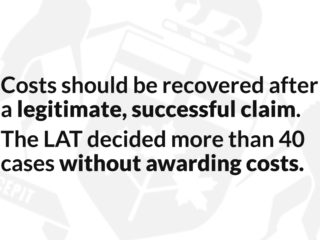Material Facts
Preamble of the Supreme Court:
After a heavy snowfall, the city started plowing and sanding streets pursuant to its written snow clearing and removal policies and unwritten practices. Among the tasks completed by city employees was the clearing of snow in angled parking stalls on streets located in the downtown core. Employees plowed the snow to the top of the parking spaces, creating a continuous snowbank along the curb that separated the parking stalls from the sidewalk. They did not clear an access route to the sidewalk for drivers parking in the stalls. The Plaintiff parked in one of the angled parking stalls. She was attempting to access a business, but the snowbank created by the city blocked her route to the sidewalk. She decided to cross the snowbank and seriously injured her leg. The Plaintiff sued the city for negligence. The trial judge dismissed the Plaintiff’s claim concluding that the city did not owe her a duty of care because its snow removal decisions were core policy decisions. In the alternative, he also found that there was no breach of the standard of care and that in the further alternative, if there was a breach, she was the proximate cause of her own injuries. The Court of Appeal concluded that the trial judge erred on all three conclusions and ordered a new trial.
The Defendant appealed this decision to the Supreme Court.
Issues
The Supreme Court analyzed the examination of Core Policy decisions and how to distinguish them from government activities that attract liability for negligence.
Brief Answer
Appeal shall be Dismissed. The City has failed to meet its burden of proving that the Plaintiff seeks to challenge a core policy decision immune from negligence liability. Accordingly, it owed a duty of care. The Regular Principles of negligence law apply in determining breach of duty, and liability. Standard of Care and Causation require a new trial. This was not a new category requiring a complete analysis of the Anns/Cooper test. The applicable Duty of Care is well established as set out in Just v. British Columbia, 1989 CanLII 16 (SCC), [1989] 2 S.C.R. 1228.
Analysis
The courts recognize government immunity from negligence liability as reiterated in R. v. Imperial Tobacco Canada Ltd., 2011 SCC 42. Briefly, core policy government decisions are defined as decisions as to a course or principle of action that are based on public policy considerations, such as economic social and political factors.
The Supreme Court was tasked with distinguishing immunity from core policy decisions by virtue of government activities. The four factors are:
- The level and responsibilities of the decision maker;
- The process by which the decision was made;
- The nature and extent of budgetary considerations; and
- The extent to which the decision was based on objective criteria.
The Separation of powers rationale upon which immunity is enlivened guides how the factors weigh in the analysis. The Supreme Court however explained that while a Duty of Care may exist, as it did in Just, and as it does on the material facts before the court, the analysis requires an assessment of whether the public authority Defendant(s) are exempt on the basis of a valid exclusion.
Two such basis exist. First, statutory provisions that exempt a defendant from liability, and second, immunity for ‘true’ policy decisions. While such policy decisions are exempt claims in negligence, the operational implementation of policy may be subject to the duty of care in negligence.
Very briefly, the Supreme Court made it clear that the underlying policy basis upon which government liability for negligence and the rationale for core policy immunity is based upon the requirement to maintain the separation of powers. Core policy decisions of the legislative and executive branches involve weighing and competing economic, social, and political factors. Government decisions, if they were subject to tort liability, could hinder good governance by creating a chilling effect. Public authorities must be allowed to adversely affect the interests of individuals when making core policy decisions without fear of incurring liability: Laurentide Motels Ltd., v. Beauport (City), 1989 CanLII 81 (SCC), [1989 1 S.C.R. 705].
Conversely, the Supreme Court notes at [49] that there are good reasons to hold public authorities liable for negligent activities falling outside this core policy sphere where they cause harm to private parties. Municipalities function in many ways as private individuals or corporations and have the ability to spread losses. Liability for operational activities is a useful protection to the citizen whose ever-increasing reliance on public officials seems to be a feature of our age: Kamloops (City of) v. Nielsen, 1984 CanLII 21 (SCC), [1984] 2 S.C.R. 2
In order to define the scope of core policy decisions, the Supreme Court explained that True Policy decisions must be distinguished from operational implementation which is subject to private law principles of negligence. By definition, true policy decisions are [51]: decisions as to a course or principle of action that are based on public policy considerations, such as economic, social, and political factors, provided they are neither irrational nor taken in bad faith: R. v. Imperial Tobacco Canada Ltd., 2011 SCC 42, [2011] 3 S.C.R. 45. They are narrow subset of discretionary decisions as discretion can imbue even routine tasks and protecting all discretionary government decisions would therefore cast the net of immunity too broadly.
The activities that fall outside this sphere of protection have been defined as [52]: the practical implementation of the formulated policies or the performance or carrying out of a policy. Such operational decisions are generally made on the basis of administrative direction, expert or professional opinion, technical standards or general standards of reasonableness: Brown v. British Columbia (Minister of Transportation and Highways), 1994 CanLII 121 (SCC), [1994] 1 S.C.R. 420
‘The key focus must remain on the nature of the decision (Just, at p. 1245; see also Imperial Tobacco, at para. 87), and this focus is supported by the identification of additional hallmarks of core policy decisions. In Just, this Court explained that core policy decisions will usually (but not always) be made “by persons of a high level of authority” (p. 1245). This was later echoed by McLachlin C.J. in Imperial Tobacco when she stated that, generally, core policy decisions will be made “by legislators or officers whose official responsibility requires them to assess and balance public policy considerations” (para. 87). In Brown, the Court explained that core policy decisions involve “planning and predetermining the boundaries of [a government’s] undertakin[g]” (p. 441). In addition, “decisions concerning budgetary allotments for departments or government agencies will be classified as policy decisions” (Just, at pp. 1242 and 1245 (emphasis added)).’ [54]
The characteristics of “planning”, “predetermining the boundaries” or “budgetary allotments” accord with the underlying notion that core policy decisions will usually have a sustained period of deliberation, will be intended to have broad application, and will be prospective in nature. For example, core policy decisions will often be formulated after debate — sometimes in a public forum — and input from different levels of authority. Government activities that attract liability in negligence, on the other hand, are generally left to the discretion of individual employees or groups of employees. They do not have a sustained period of deliberation, but reflect the exercise of an agent or group of agents’ judgment or reaction to a particular event (see H. J. Krent, “Preserving Discretion Without Sacrificing Deterrence: Federal Governmental Liability in Tort” (1991), 38 U.C.L.A. L. Rev. 871, at pp. 898-99). [55]
The Supreme Court added further clarification to the framework by indicating that a public servants choice on how to approach government services frequently involves financial implications. For this reason the mere presence of budgetary, financial, or resource implications does not determine whether a decision is a core policy; it is but one consideration among many. Moreover, the word ‘policy’ has wide meaning from broad directions to a set of ideas or specific plans. Accordingly, the fact that the word policy is found within a written document, or that a plan is labelled as a policy, may be misleading and certainly not determinative of the question. The focus must therefore remain on the nature of the decision itself rather than the format or governments label.[59]
The Framework Analysis
[62] First: the level and responsibilities of the decision-maker. With this factor, what is relevant is how closely related the decision-maker is to a democratically-accountable official who bears responsibility for public policy decisions. The higher the level of the decision-maker within the executive hierarchy, or the closer the decision-maker is to an elected official, the higher the possibility that judicial review for negligence will raise separation of powers concerns or have a chilling effect on good governance. Similarly, the more the job responsibilities of the decision-maker include the assessment and balancing of public policy considerations, the more likely this factor will lean toward core policy immunity. Conversely, decisions made by employees who are far-removed from democratically accountable officials or who are charged with implementation are less likely to be core policy and more likely to attract liability under regular private law negligence principles (Just, at pp. 1242 and 1245; Imperial Tobacco, at para. 87).
[63] Second: the process by which the decision was made. The more the process for reaching the government decision was deliberative, required debate (possibly in a public forum), involved input from different levels of authority, and was intended to have broad application and be prospective in nature, the more it will engage the separation of powers rationale and point to a core policy decision. On the other hand, the more a decision can be characterized as a reaction of an employee or groups of employees to a particular event, reflecting their discretion and with no sustained period of deliberation, the more likely it will be reviewable for negligence.
[64] Third: the nature and extent of budgetary considerations. A budgetary decision may be core policy depending on the type of budgetary decision it is. Government decisions “concerning budgetary allotments for departments or government agencies will be classified as policy decisions” because they are more likely to fall within the core competencies of the legislative and executive branches (see, e.g., Criminal Lawyers’ Association, at para. 28). On the other hand, the day‑to‑day budgetary decisions of individual employees will likely not raise separation of powers concerns.
[65] Fourth: the extent to which the decision was based on objective criteria. The more a government decision weighs competing interests and requires making value judgments, the more likely separation of powers will be engaged because the court would be substituting its own value judgment (Makuch, at pp. 234-36 and 238). Conversely, the more a decision is based on “technical standards or general standards of reasonableness”, the more likely it can be reviewed for negligence. Those decisions might also have analogues in the private sphere that courts are already used to assessing because they are based on objective criteria.
Application of Core Policy Immunity
Absent a statutory exemption and failing any live allegation of irrationality or bad faith and accepting that the material circumstance falls within the category as set out in Just, the only issue before the court is immunity from liability in negligence because the Plaintiff has challenged a core policy decision.
On appeal, the characterization of core policy decisions are questions of law, and reviewable on a standard of correctness: 1688782 Ontario Inc., v. Maple Leaf Foods Inc., 2020 SCC 35. Moreover, in Duty of Care analysis, the decision or conduct at issue must be described with precision to ensure that immunity only attaches to core policy decisions.
The Supreme Court concluded that the City’s position fails on three aspects. First that, the issue before the court of how the City ploughed snow, in particular, without creating direct access to sidewalks by forming snowbank barriers. Even if the written policy about snow removal was a core policy, the duty must be tied to the negligent conduct, and the creation of such snowbanks to block sidewalk access may not itself be a core policy. To argue otherwise would be overly broad merging together all City snow removal decisions and activities.
Second, labelling written policies as core policies is not determinative of the issue. The City’s unwritten snow removal practices likewise cannot be accepted as unwritten core policies simply because they say they are.
Third, budgetary implications are not determinative of the core policy question. The city argued that striking a balance between budgetary considerations, man hours, future snow removal, and responding appropriately to snow events, without success. The court rationalized this approach by concluding that even the most routine decisions involve some consideration of budget or the scarcity of resources.
The representative of the City gave evidence at trial that while they were ‘closely connected to the democratically elected official’, she did not have the decision-making authority to make a different decisions with respect to the clearing of snow. [failing to meet the first factor]
There was no suggestion that the method of plowing the parking stalls on the street resulted from a deliberative decision involving any prospective balancing of competing objectives and policy goals by the supervisor or her superiors. The evidence of the city was that this decision was more of a custom than based on an assessment of feasibility of clearing. [failing to meet the second factor]
Although budgetary considerations were involved, these were not high-level budgetary considerations but rather day to day budget considerations of individual employees. [failing to meet the third factor]
Importantly, the City’s chosen method (operational) of ploughing can easily be assessed based on objective criteria. [failing to meet the fourth factor] The court is well equipped to determine whether the snow banks posed an objectively unreasonable risk of harm (the standard of care) and determining the safety measure of a road or sidewalk based on accepted standards.
Conclusion
The Supreme Court conclused at [85], that:
Thus, the City has not shown that the way it plowed the parking stalls was the result of a proactive, deliberative decision, based on value judgments to do with economic, social or political considerations. In these circumstances, a court’s review of the City’s chosen means of clearing the parking stalls in the 300 block of Baker Street does not engage the underlying purpose for core policy immunity. Insulating these kinds of decisions from negligence liability does not undermine the ability to make important public interest policy choices. The public interest is not served when ad hoc decisions that fail to balance competing interests or that fail to consider how best to mitigate harms are insulated from liability in negligence. Oversight of such decisions respects the respective roles of each branch of government under the separation of powers doctrine.
As a result of the analysis, the treatment of the standard of care, to exempt the City from liability was flawed. Importing considerations and conclusions from the Core Policy immunity into this aspect of the analysis failed to engage with the appropriate standard of care of a Municipality, which is reasonableness. Duty of Care considerations must be kept distinct from the Standard of Care assessment:
To avoid liability, a defendant must “exercise the standard of care expected that would be of an ordinary, reasonable and prudent person in the same circumstances” (Ryan v. Victoria (City), 1999 CanLII 706 (SCC), [1999] 1 S.C.R. 201, at para. 28). Relevant factors in this assessment include whether the risk of injury was reasonably foreseeable, the likelihood of damage and the availability and cost of preventative measures (P. H. Osborne, The Law of Torts (6th ed. 2020), at pp. 29-30; Bolton v. Stone, [1951] A.C. 850 (H.L.)). A reasonable person “takes precautions against risks which are reasonably likely to happen” (Bolton, at p. 863).
Causation was also flawed. Causation requires the following two-part analysis at [96-97]:
First, the defendant’s breach must be the factual cause of the plaintiff’s loss. Factual causation is generally assessed using the “but for” test (Clements v. Clements, 2012 SCC 32, [2012] 2 S.C.R. 181, at paras. 8 and 13; Resurfice Corp. v. Hanke, 2007 SCC 7, [2007] 1 S.C.R. 333, at paras. 21-22). The plaintiff must show on a balance of probabilities that the harm would not have occurred but for the defendant’s negligent act.
Second, the breach must be the legal cause of the loss, meaning that the harm must not be too far remote (Mustapha, at para. 11; Saadati, at para. 20; Livent, at para. 77). The remoteness inquiry asks whether the actual injury was the reasonably foreseeable result of the defendant’s negligent conduct (Mustapha, at paras. 14-16; Livent, at para. 79). Remoteness is distinct from the reasonable foreseeability analysis within duty of care because it focuses on the actual injury suffered by the plaintiff, whereas the duty of care analysis focuses on the type of injury (Livent, at para. 78; Klar and Jefferies, at p. 565).
The Trial Judge was unclear as to factual causation and turned to remoteness to declare the plaintiff assumed the risk willingly. A number of distinct concepts were misapplied according to the Supreme Court. The Trial Judge also failed to address the appropriate legal question of remoteness: whether it was reasonably foreseeable that the City’s failure to remove the snowbanks could cause the Plaintiff’s injury. The ‘Defense’ of Volenti and Contributory Negligence are separate and distinct from the causation analysis. The misapplication of these defenses, their elements, and the burden of proving them rendered the causation analysis flawed.













